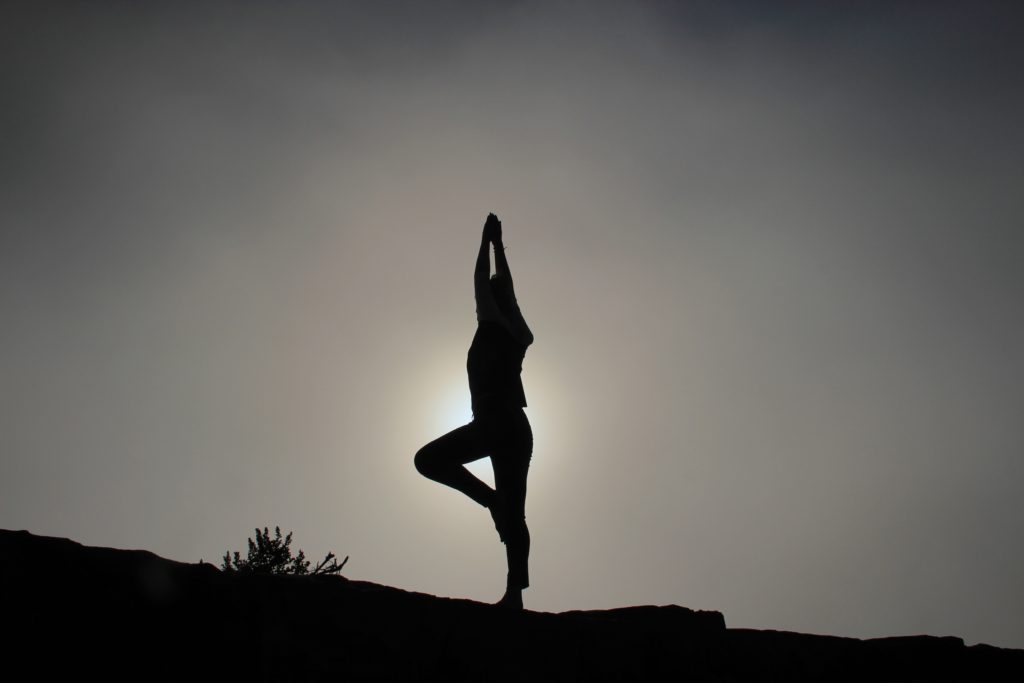
Breathe Your Way into Balance
Photo Credit: Kevin Dinkel, via Flickr Creative Commons
The breath is the perfect, natural object of meditation – it’s the most readily accessible and powerful tool we have. Although our breath is under autonomic control, we can consciously influence it. We can change the rhythm, deepen it and hold it, but if we don’t pay attention, it will take on a rhythm of its own. This is necessary so that we don’t have to think about breathing every moment.
How we breathe affects the way we think and feel, and how we think and feel affects the way we breathe
When we do think about breathing, however, we can influence the rhythm. This is what makes the breath the link between the body and mind. How we breathe affects the way we think and feel and how we think and feel affects the way we breathe. Because the breath is linked to our nervous system, the way we breathe has an impact on how we handle stress.
Normally we take about 15 – 17 breaths a minute. When we slow down the breath, the nervous system is quieted by up regulating the parasympathetic response, or relaxation response. When we speed up the breath, we experience the opposite effect, which prepares the body to fight or flee.
The Roles of the Right and Left Nostril Breathing
The breath is also linked to the nervous system through the different uses of the right nostril breath and left nostril breath. The right supports the sympathetic nervous system and heating functions in the body and the left supports the parasympathetic nervous system or cooling functions. Our normal nasal cycle is to breathe predominantly through one side for approximately an hour-and-a-half to two hours and then it switches. When we are out of balance, this rhythm is interrupted and deregulated. This can affect our nervous system and our sense of well being.
Observing Your Breathing
To observe this natural nasal cycle, bring your attention to the nostrils and begin to sense what side is more open. If you are unable to sense it, you can close one side and then the other with your fingers (note: doing this may also start to shift the rhythm). The nasal rhythm is most obvious when we have a cold. You may notice that one side is breathing more openly and then after a while it switches. This is just an exaggeration of what is already happening when we are not sick.
When we work too hard, or are under chronic stress, the nasal cycle is interrupted.
In a book called The Science of Breath by Swami Rama, Rudolph Ballentine M.D. and Alan Hymes M.D., they discuss the erectile tissue in the sinuses that causes one side to swell and close. While yogis have understood this phenomenon for centuries, we in the West have very little understanding of this process. The authors go on to add that this tissue can actually be affected by our thoughts. So you could just imagine one side opening more than the other for several breaths and it will shift the nasal cycle. If you tune into your own breath in the nostrils you can experience this switching for yourself.
There is a moment between the switching processes when both nostrils open evenly. It’s a time when there is balance between the two sides and balance between the sympathetic and parasympathetic systems. There are several times when this balance occurs. Another is at sunrise and sunset. This is outlined in a book called Breath, Mind and Consciousness by Harish Johari. This may explain why people seem to feel a sense of peace and balance when watching the sunrise and set. This balance of the nasal cycling also occurs during meditation. In turn, if we focus on letting both nostrils open evenly before we enter into meditation it will support the practice and take us deeper.
For this reason the yogis have used alternate nostril breathing as a practice to balance the nervous system and enter into meditation. Alternate nostril breathing has also been a tool to balance the hemispheres of the brain, calm the mind, strengthen the lungs, and relieve allergies and sinus issues as stated by both Ballentine and Johari. When we work too hard, or are under chronic stress, the nasal cycle is interrupted. When you practice alternate nostril breathing, it brings the nasal rhythm back into balance when it becomes tweaked by the stressors of the day.
Alternate Nostril Breathing
For this reason the yogis have used alternate nostril breathing as a practice to balance the nervous system and enter into meditation. Alternate nostril breathing has also been a tool to balance the hemispheres of the brain, calm the mind, strengthen the lungs, and relieve allergies and sinus issues. When we work too hard, or are under chronic stress, the nasal cycle is interrupted. When you practice alternate nostril breathing, it brings the nasal rhythm back into balance when it becomes tweaked by the stressors of the day.
The practice is simple, yet quite powerful. It can even be done sitting at your desk. Even 10 minutes a day can have a profound effect on your nervous system and stress levels.
What do you notice when you practice alternative nostril breathing?








